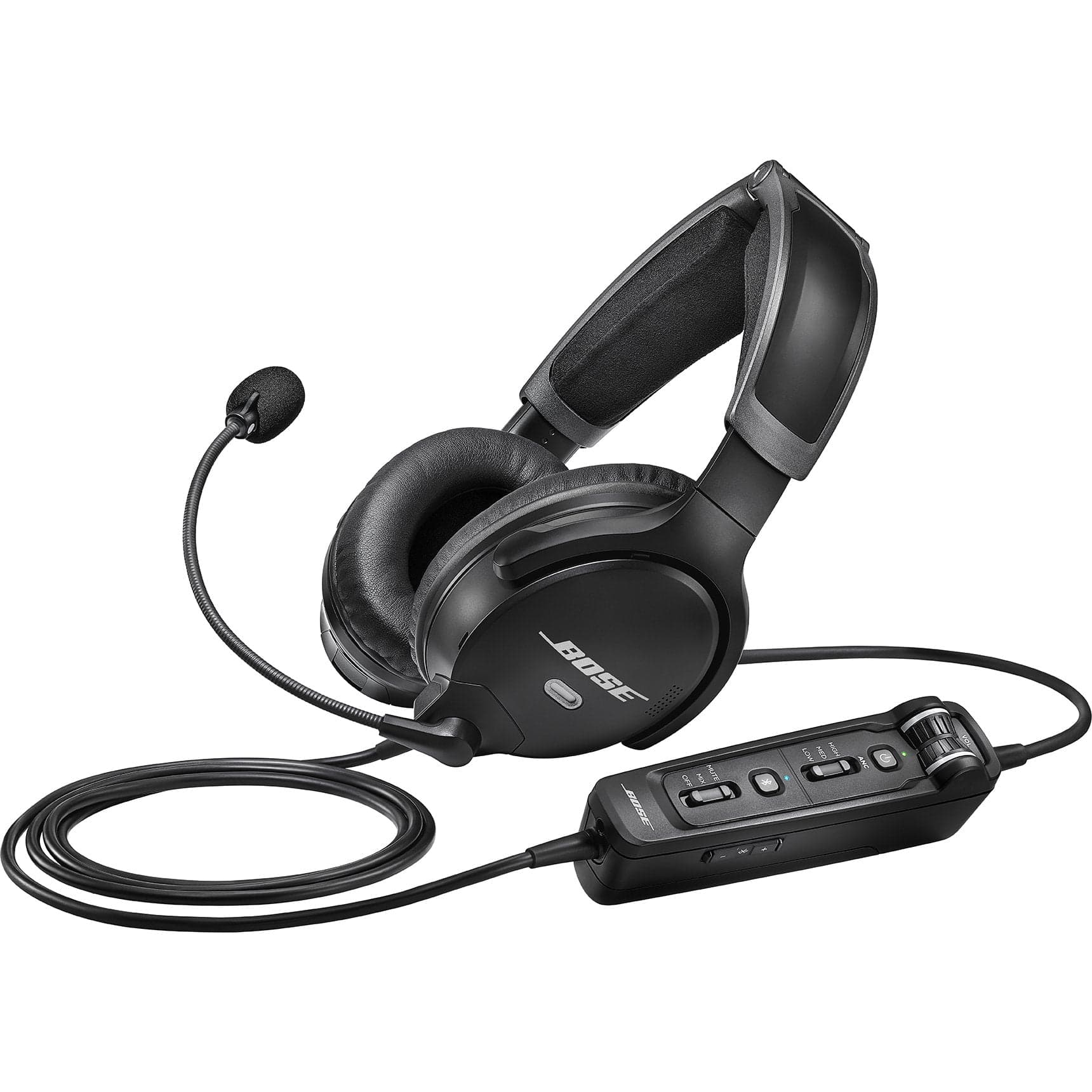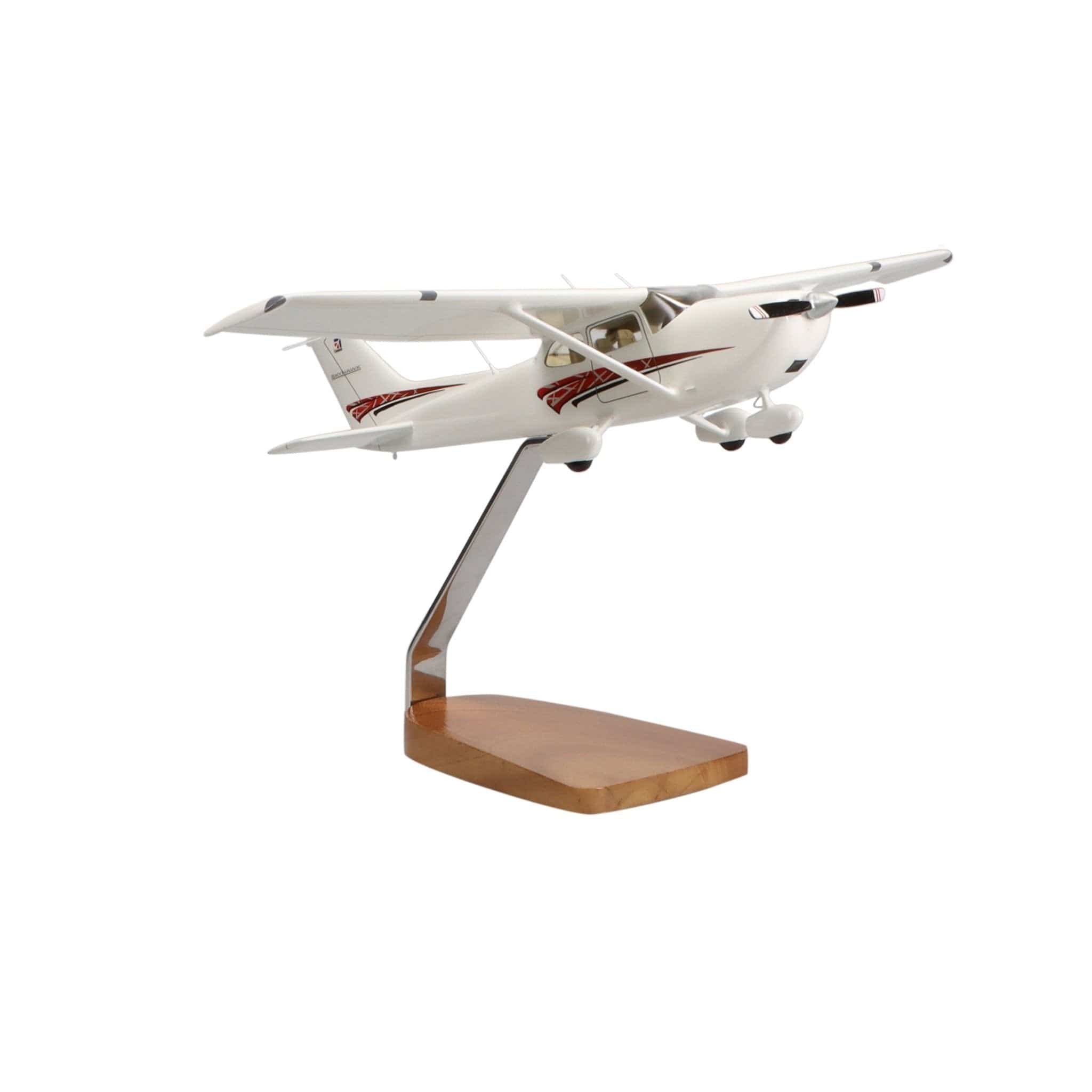As student pilots, CFIs, and flight schools weigh their options for trainer aircraft, they often consider time-honored classics like the Cessna 150, Cessna 152, and Piper Cub. However, there's another prime contender that's making waves in the aviation world – the Diamond DA20 Katana.
This Austrian-designed tricycle gear plane not only checks all the boxes for the performance and handling characteristics pilots desire in a two-place trainer but also adds an attractive sporty style to the mix.
Let's learn more about this amazing aircraft!
 The Sporty Aircraft
The Sporty Aircraft
The Diamond DA20 is where sporty sleek meets outstanding performance.
Imagine the exhilaration of your very first flight – the anticipation, the sense of adventure, that feeling you get when you take the controls of a sports car and add wings. Now picture a sleek, exciting aircraft that offers outstanding performance, with impressive durability to match. This is precisely what Diamond Aircraft Industries promises with their DA20 Katana.
But to understand how this amazing aircraft came about, we have to first delve into its history.
History of Diamond Aircraft Industries
The DA20’s parent company, Diamond Aircraft Industries, is an Austrian based aircraft manufacturer that got its start in 1981 with a motor glider aircraft known as the HK36 Dimona. The Dimona was designed with the premise of creating a high quality, high performance aircraft that could be sold at a competitive price.
The Dimona was a commercial success and paved the way for a series of light aircraft through the 1990s followed by multi-engine and unmanned aerial vehicles (UAVs) after 2000. The DA20 is part of the lineage and legacy of Diamond’s light aircraft success.

Designing the Diamond DA20
The plane that we in North America know as the DA20 was originally called the DV20 for its 1993 Austrian release. To support North American demand for the aircraft, Diamond opened a manufacturing operation in Canada and the Canadian built versions that first appeared on the market in 1995 were given the DA20 name.
The premise behind the DA20 was to continue to branch out from gliders, develop a successful light aircraft line, and create an aircraft that pilots would appreciate while making it unique enough to avoid any head-to-head direct comparisons with other planes. The already successful Diamond HK36 Dimona was used as a starting point for envisioning the DA20 Katana.
The Diamond's Glide Ratio
When drafting the Diamond DA20 Katana, the design team also drew heavily on their history with gliders. This is readily apparent in areas like the impressive glide ratio of 11:1 or 14:1 depending on the variant of the aircraft.
As with a glider the ride was designed to be quiet – so quiet in fact that headsets or use of the integrated intercom system are often unnecessary for communication between the pilot and passenger.
The Diamond as a Trainer Plane
The DA20 was designed with optimum performance in mind, so the team focused in on addressing the handling characteristics and aircraft features that would help new student pilots to safely develop their skills.
For instance, it is well known that the first few (or more) landings that student pilots make are likely to be bumpy and rough. Some planes would have trouble accommodating these less than perfect landings, but the DA20 is very forgiving of a bit of inadvertent rough handling.
The designers gave the DA20’s landing gear a rugged spring aluminum construction and paired it with an elastomeric-shock nose gear. This configuration was found to hold up to the rigors of flight training while having the added benefit of being nearly maintenance free.
Distinctive Design Features of the Diamond DA20
Throughout the design process, the Diamond team targeted quality, performance, unique features, and the ability to deliver all of this at a very competitive price. The distinctive design features that set the DA20 apart from its competition include:
Composite Construction
Strength and durability are the hallmarks of the DA20’s composite construction. The composite airframe is made of fiberglass and carbon-fiber reinforced plastic.
With this composite construction, the DA20 has no defined structural life limit and could conceivably live forever if well cared for. This means it is also more well-suited to endure the use and abuse that a novice pilot is apt to put it through.
Cockpit Visibility
One of the first things student pilots fall in love with is the amazing visibility they have in a DA20 cockpit. The wraparound design of the canopy and rear windows (in some variants) maximizes the amount of glass while a seating position forward of the wings affords excellent visibility in all directions.
New pilots especially appreciate how much easier it is to spot other traffic and to visually navigate in a DA20.
Cockpit Comfort
The designers made sure that the pilot and passenger (or CFI) would be comfortable throughout the flight. The sporty cockpit includes ergonomically designed luxurious bucket seats with a 26 G rated safety design. Available in your choice of leather or sheepskin. A 4-point safety harness integrates with the seat to provide secure yet comfortable safety.
Easy Maintenance
The upkeep for a DA20 is straightforward and minimal. Thanks to the smooth, corrosion resistant finish and lack of rivets, the airframe will stand up to weather and other environmental stressors without much assistance.
Inspections are also streamlined thanks to transparent Plexiglas panels in the wings that allow key control elements to be viewed and inspected without disassembling the aircraft.
 Flying the Diamond DA20
Flying the Diamond DA20
Diamond describes the DA20 piloting experience saying, “Imagine taking your favorite sports car and adding wings. That’s the feeling you get when you strap into the two-seat DA20 and take to the sky. Sporty, sleek and exciting, yet surprisingly affordable, the DA20 offers outstanding performance, with impressive durability and economy for commercial training.”
Accessing the DA20 through the fighter pilot inspired canopy sets the stage for the performance that is to come. The center stick push-rod controls are highly responsive and although your CFI will not appreciate you trying it out as a student pilot, the DA20 is spin certified.
While in the air, it is easy to spot approaching aircraft and to navigate thanks to the excellent cockpit visibility provided by the wraparound canopy and forward positioned seats. The easy handling DA20 is designed so that the ailerons can maintain effectiveness even after the wing roots have begun to stall.
This gives a new pilot time to recognize and correct an impending stall. In AOPA’s review of the C1 Diamond DA20 variant, they note that it shows, “a good compromise between being too benign to teach anything and too sharp for neophyte pilots.” Well-balanced control forces also reduce the frequency of the need to trim.
When it is time to land, the tricycle gear configuration with forgiving rugged spring aluminum main landing gear and elastomeric-shock nose gear eases the learning curve. Even if a gust comes up, the DA20 is stable having a 20-knot demonstrated cross wind landing component.
Pilots who are looking for a plane that will take them from first flight all the way through night VFR training will appreciate the DA20’s EASA night VFR certification status although it should be noted that despite the flight instruments in the aircraft the DA20 is not IFR certified.
Tour the DA20 with MojoGrip to learn about its features, flight characteristics, and how it compares to its big brother the four-place DA40. For reference, MojoGrip is reviewing the original Rotax engine model of the DA20 which can be purchased used for around $49,000 compared to the roughly $200,000 price of the current C1 model.
Variants of the Diamond DA20
The original Diamond DV20-A1 Katana in Austia and DA20-A1 Katana in Canada were followed by other variants plus a spinoff into the four-place DA40.
DA20-C1 Katana
The most frequently seen variant, particularly as a trainer, is the DA20-C1 Katana released in 1998. The C1 Katana saw the replacement of the A1’s 80 horsepower Rotax engine with a 125 horsepower Continental which also led to significant advances in both max cruise speed and sea-level rate of climb.
In the cockpit, although you can opt for conventional flight instrumentation, the DA20-C1 also comes with a choice of either the Aspen EFD 1000 or Garmin G500 glass.
DA20-100 Katana 100
In 1999, Diamond released the DA20-100 Katana 100 engineered for the European market. The Katana 100 was repowered by the 100 horsepower Rotax 912S rather than the 80 horsepower Rotax 912 that was installed in the original DV20-A1s and DA20-A1s. This improved cruise performance and increased the service ceiling from 14,000 to 17,600 feet.
DA20-C1 Evolution & DA20-C1 Eclipse
A more affordable trainer option for flight schools, the DA20-C1 Evolution is essentially a stripped-down C1 Katana without the rear windows but with the same engine while the DA20-C1 Eclipse includes the rear windows and is equipped for private use.
DA20-C1 Falcon
The final variant is the military trainer DA20-C1 Falcon. In the Falcon, the instruments were repositioned in front of the right student seat so the stick would be in the right hand and throttle in the left like a fighter plane.
Operational History of the DA20
The original DA20 and its variants have been put into service at many flight training schools as well as by military branches in Ecuador and Poland. In the United States, Embry-Riddle Aeronautical University provided the United States Air Force Academy with DA20-C1 Falcons for a now discontinued Academy Flight Screening (AFS) program. A contracted fleet of DA-20s is used by the United States Air Force for providing an Initial Flight Training (IFT) screening program.
Diamond DA20-C1 Katana Specifications
- Engine: Continental IO-240-B32B four cylinder
- Horsepower: 125 hp
- Propeller: 2 x Sensenich 2 blade fixed pitch
- Length: 23 feet 9 inches
- Height: 7 feet 1 inch
- Wing Span: 35 feet 9 inches
- Seats: 2
- Empty Weight: 1,180 pounds
- Maximum Gross Weight: 1,764 pounds
- Maximum Takeoff Weight: 1,764 pounds
- Useful Load: 584 pounds
- Fuel Capacity: 24 gallons
Diamond DA20-C1 Katana Performance
- Takeoff Distance Ground Roll: 1,256 feet
- Takeoff Over 50 ft. Obstacle: 1,640 feet
- Rate of Climb, Sea Level: 830 feet per minute
- Top Speed: 188 miles per hour
- Cruise Speed: 130 knots
- Stall Speed: 36 knots
- Fuel Consumption at 55% (8,000 ft): 5.3 gallons per hour
- Range at 55% (8,000 ft): 525 nautical miles
- Service Ceiling: 13,100 feet
- Landing Ground Roll: 661 feet
- Landing Over 50 ft. Obstacle: 1,360 feet
The Diamond DA20 Price
The price of this aircraft varies depending on several factors. The best thing to do would be to visit sites for purchasing a Diamond and shop around for the best options.
- Cost of a New Aircraft: a new DA20 will cost around $279,000
- Cost of a Used Aircraft: purchasing a used DA20 will cost from $65,000 on the lowest end to $200,00 on the highest end.
Takeaway
Diamond aircraft are known as the plane that is "like having a sports car and adding wings". The manufacturer of this aircraft asks potential buyers and flyers to imagine taking your favorite sports car and being able to fly it in the skies, that in essence is the way flying this aircraft feels. If you are interested in learning more about this aircraft we encourage you to check out the Diamond Aircraft website for more information.
Want to learn about different aircraft?
Our guides provide everything you need to know.
Did you find this article helpful?
Do you think we missed anything important? Let us know in the comments below!











